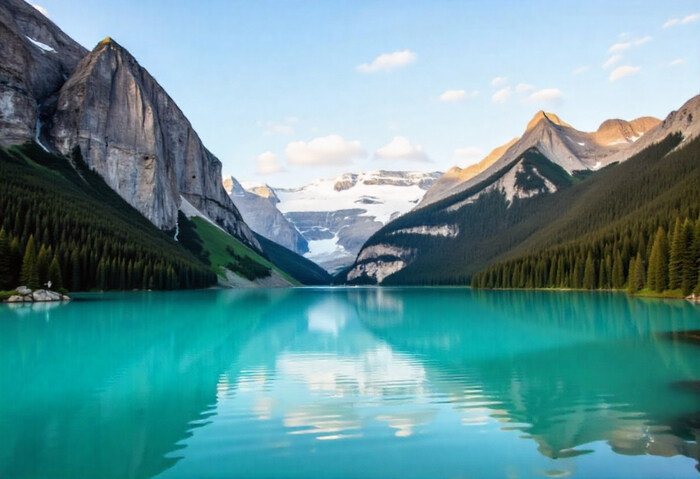Published on
November 4, 2025

Canada’s 2025 summer tourism season reached unprecedented heights, with revenue soaring to nearly sixty billion dollars — the strongest performance in the nation’s history. The remarkable surge was fueled by Canadians rediscovering their own landscapes, coupled with a powerful wave of international arrivals from the United Kingdom, Australia, and Europe. Enhanced flight connections, renewed traveler confidence, and Canada’s reputation for breathtaking natural beauty all played decisive roles in the country’s record-breaking success.
From the wild coastlines of British Columbia to the charming harbors of Prince Edward Island, every corner of the nation felt the momentum. Iconic attractions such as Niagara Falls, Banff National Park, and Vancouver’s waterfront buzzed with energy as hotels filled to capacity and local economies flourished. This extraordinary season not only signaled a powerful rebound for Canada’s tourism industry but also reinforced the country’s status as one of the world’s most captivating and resilient travel destinations.
According to recent data released by Destination Canada, tourism revenue between May and August reached nearly $59 billion, representing a 6 percent increase compared to the same period in 2024. This marks the most profitable summer ever recorded for Canada’s visitor economy and highlights the continued strength of post-pandemic travel recovery.
The record-breaking figures reflect more than just a busy travel season—they represent the resilience of local businesses, from tour operators and hoteliers to restaurant owners and guides, who turned months of anticipation into tangible economic gains. For many, this summer was not only about recovery but resurgence.
Domestic Travel Fuels the Momentum
A key driver of this year’s boom was the surge in domestic tourism. Canadian travelers, inspired by both affordability and convenience, chose to explore their own country instead of venturing abroad. Data shows a 7 percent rise in domestic tourism spending, a significant factor that offset minor dips in international visitor spending from certain markets.
Families favored national parks and road trips through the Rockies. Young travelers gravitated toward cultural experiences—such as food tours, craft breweries, and local music festivals—while older tourists embraced cross-country rail journeys and coastal drives through Nova Scotia and New Brunswick.
This wave of local enthusiasm not only boosted hotel and restaurant revenues but also revitalized smaller communities that depend heavily on tourism. For many Canadians, rediscovering their own backyard offered a sense of pride and connection that complemented the nation’s broader economic growth.
A Slight Decline from U.S. Visitors, Offset by Global Travelers
One of the few soft spots in this otherwise glowing report was a 1.7 percent decline in spending from U.S. tourists. Analysts suggest that the change could be due to fluctuating exchange rates or the growing popularity of domestic travel options within the United States. However, this small dip had little impact on the overall success story, thanks to an impressive rise in visitors from overseas.
International travelers—particularly from the United Kingdom, Australia, and across Europe—showed heightened interest in exploring Canada’s landscapes and cultural treasures. Visitors from Britain were drawn to the iconic Canadian Rockies, Australians flocked north to witness the aurora borealis in the Northwest Territories, and Europeans arrived in steady numbers to experience Alberta’s glaciers and Quebec’s vibrant festivals.
This 10 percent increase in international tourism revenue injected fresh vitality into both major urban centers and more remote destinations, helping to diversify Canada’s visitor base and strengthen its position in the global travel market.
Hotels and Attractions Reach Record Capacity
The summer’s success was evident in the country’s accommodation statistics. Hotels across Canada reported near-record occupancy levels, with August closing at an 80.7 percent national occupancy rate—the highest since before the pandemic. Popular destinations such as Toronto, Vancouver, Banff, and Montreal saw full bookings throughout much of the summer, while smaller boutique hotels and inns in rural regions also enjoyed an unprecedented rise in occupancy.
Restaurants, local attractions, and cultural events benefited equally from the influx of travelers. Patios buzzed with activity, museums welcomed long queues, and outdoor festivals reported record attendance. Even in northern regions, where travel demand tends to be more seasonal, operators experienced a strong flow of bookings from both Canadians and foreign visitors seeking nature-based adventures.
A Foundation for Future Growth
This exceptional summer has set the stage for continued expansion in 2026. The strong mix of domestic and international demand has proven that Canada’s tourism sector is not only recovering but evolving—becoming more sustainable, experience-driven, and inclusive.
The performance underscores how adaptability, targeted marketing, and renewed appreciation for local travel can drive robust results. As Canada looks ahead to the next travel season, the industry’s challenge will be maintaining this momentum while ensuring that growth remains balanced across regions.
Canada’s 2025 summer tourism season shattered records with nearly sixty billion dollars in revenue, driven by a surge in domestic travel and a remarkable boost from visitors across the United Kingdom, Australia, and Europe.
In the end, 2025’s record-setting summer stands as a powerful reminder of Canada’s enduring appeal—a country defined by its landscapes, diversity, and the spirit of exploration that continues to draw visitors from both near and far.









